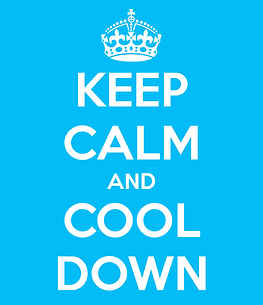
Understand how appropriate warm up and cool down routines can help to prevent injury.

Physical Benefits Of A Warm Up
-
Warming up muscles/preparing the body for physical activity
-
Increase in body temperature which can be achieved during the pulse raiser (so muscles more flexible/less chance of injury)
-
Increase in heart rate which occurs during the pulse raiser (speeding up delivery of oxygen to working muscles)
-
Increase in flexibility of muscles and joints as a result of stretching (reducing chances of injury)
-
Increase in pliability of ligaments and tendons as a result of stretching (reducing chances of injury)
-
Increase in blood flow and oxygen to muscles
-
Increase in the speed of muscle contraction/reaction time
-
Increase in the strength of muscle contraction
-
Release of adrenaline (speeding up delivery of oxygen to working muscles)
-
Improve performance/technique/practice/rehearse skills
-
Delay onset of lactic acid/fatigue
-
Reduce risk of injury/muscle strain
Psychological Benefits
Psychological benefits of a warm up:
-
Heightens/control arousal levels/‘get in the zone’/settle nerves
-
Improve concentration/focus
-
Increase motivation/drive
-
Mental rehearsal
-
Increase confidence.
A warm up is carried out before training or a competitive match/game to prepare a performer physiologically and psychologically.

Component of Warm Up:
1. Pulse Raiser - Exercises that slowly increase the heart rate and body temperature - Jogging, skipping, hopping, cycling etc.
2. Mobility - Exercises that take the joints through their full range of movement - Arm swings, hip circles
3. Dynamic movements - Changing speed and direction - Sprinting towards a cone, changing direction and sprinting to another.
4. Stretching - Can reduce injuries, increase flexibility, range of motion, posture and coordination. This should be divided into static and dynamic
stretches - Static (still): quadricep stretch, hamstring stretch, biceps etc. - Dynamic (moving): open the gate, close the gate, lunges walk.
5. Skill Rehearsal - Rehearsing common movement patterns and skills which will be used in the activity - Dribbling drills for football, passing skills for netball etc.
COOL DOWN
-
Helps the body’s transition back to a resting state
-
Gradually lowers heart rate
-
Gradually lowers body temperature
-
Circulates blood and oxygen
-
Reduces breathing rate
-
Removes waste products such as lactic acid which can cause pain following exercise
-
Reduces the risk of muscle stiffness and soreness
-
Aids recovery by stretching muscles e.g. lengthens and strengthens muscles for the next work out or time that the muscles will be used.

Exercises which gradually lower your heart rate and reduce your muscle temperature. The exercises must be linked to the activity that you have been playing for example a footballer would perform a slow jog!
Pulse Lowering
St Antony's

Perform static stretches to reduce muscle stiffness and to aid recovery by removing Lactic Acid from the muscles.
Static Stretches
St Antony's
Planning a Cool Down
When planning a cool down you must consider the following factors -
-
Size of the group
-
Age of the participants
-
Medical conditions
-
Gender of the group
-
Experience of the group
-
Fitness levels of the group
-
Hot conditions
-
Cold conditions
-
Facilities available
WHY?

